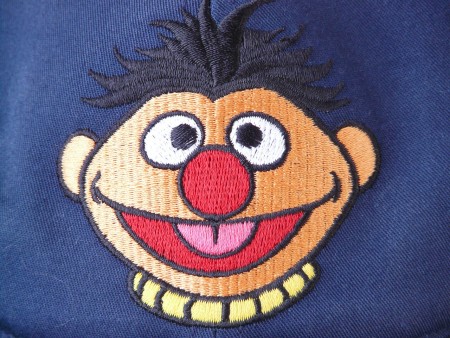
In the 1970s and ’80s, young kids enjoyed many Canadian-made television shows, including Today’s Special, Mr. Dressup and The Friendly Giant. But the show that drew the most viewers was a Canadian version of the hit American program, Sesame Street.
University of Guelph history professor Matthew Hayday is researching how the Canadian content added to Sesame Street was used to promote Canadian values to its young viewers.
Initially, there was no plan to make Sesame Street more Canadian. The Canadian Broadcasting Corporation (CBC) bought the rights to air Sesame Street in 1970, before the Canadian Radio-television Commission (CRTC) published its planned revisions to Canadian content requirements.
The broadcaster had been assured the new rules wouldn’t affect the airing of Sesame Street, and was even told that the show might be considered “neutral,” or Canadian, content, but this proved not to be the case. The Children’s Television Workshop, creators of Sesame Street, required that episodes be shown five days a week with no commercials. This was a problem for the CBC-linked stations that were now allowed only limited amounts of American programming and wanted to maximize their revenue from those shows.
“Parents got really worked up when it looked like Sesame Street might be dropped,” says Hayday. “There were petitions and demonstrations. Eventually the CBC decided to solve the problem by adding Canadian content to the show.”
Hayday is particularly interested in the way these segments were used to promote Canadian identity and various aspects of Canadian culture. Initially, the American scenes teaching basic Spanish vocabulary were replaced with segments in French, and other scenes with American content were replaced with ones containing Canadian images and ideas.
“They also had to replace or re-dub any of the segments where the alphabet was recited, so that the last letter would be pronounced ‘zed’ instead of ‘zee,’” says Hayday. He adds the new segments were of such high quality that most viewers were unaware they were extras added just for Canadian viewers.
Over the years, the amount of Canadian content on Sesame Street was gradually increased. By 1987, there were new Canadian Muppets on the show: Basil the bear, Dodi the bush pilot, and Louis the otter, all designed by Jim Henson.
“This helped with conveying some of the ideas about Canada that CBC thought were important for children to see,” says Hayday. “They wanted to emphasize Canada’s diversity, so you would have segments with kids listening to Raffi, for example, but the kids would all be from different ethnic backgrounds.” The idea was to make things seem normal to children that might not have been common for the older generation. In the same way, segments in French helped to make that language a part of everyday life for children from English-speaking communities. Other segments exposed Canadian children to life in First Nations and Inuit communities.
Canadian content regulations still exist and affect radio and television programming — the CRTC is even proposing that Netflix should have a certain percentage of Canadian content.” However, Hayday says, “With the fragmented media universe, it’s harder to control everything.”